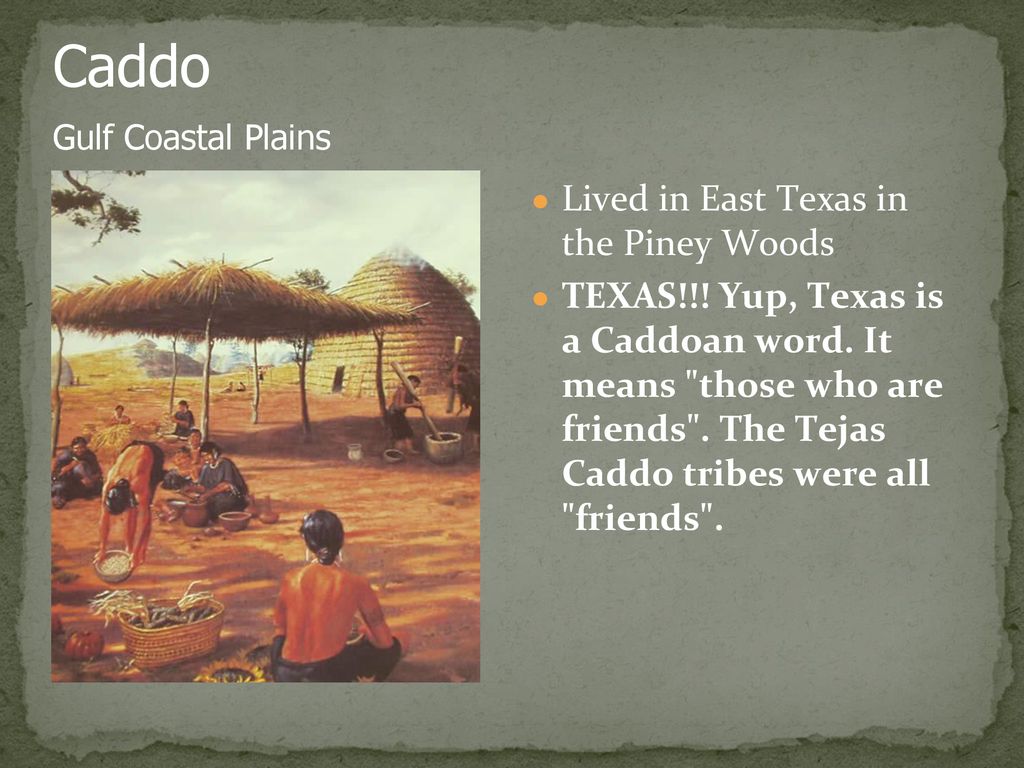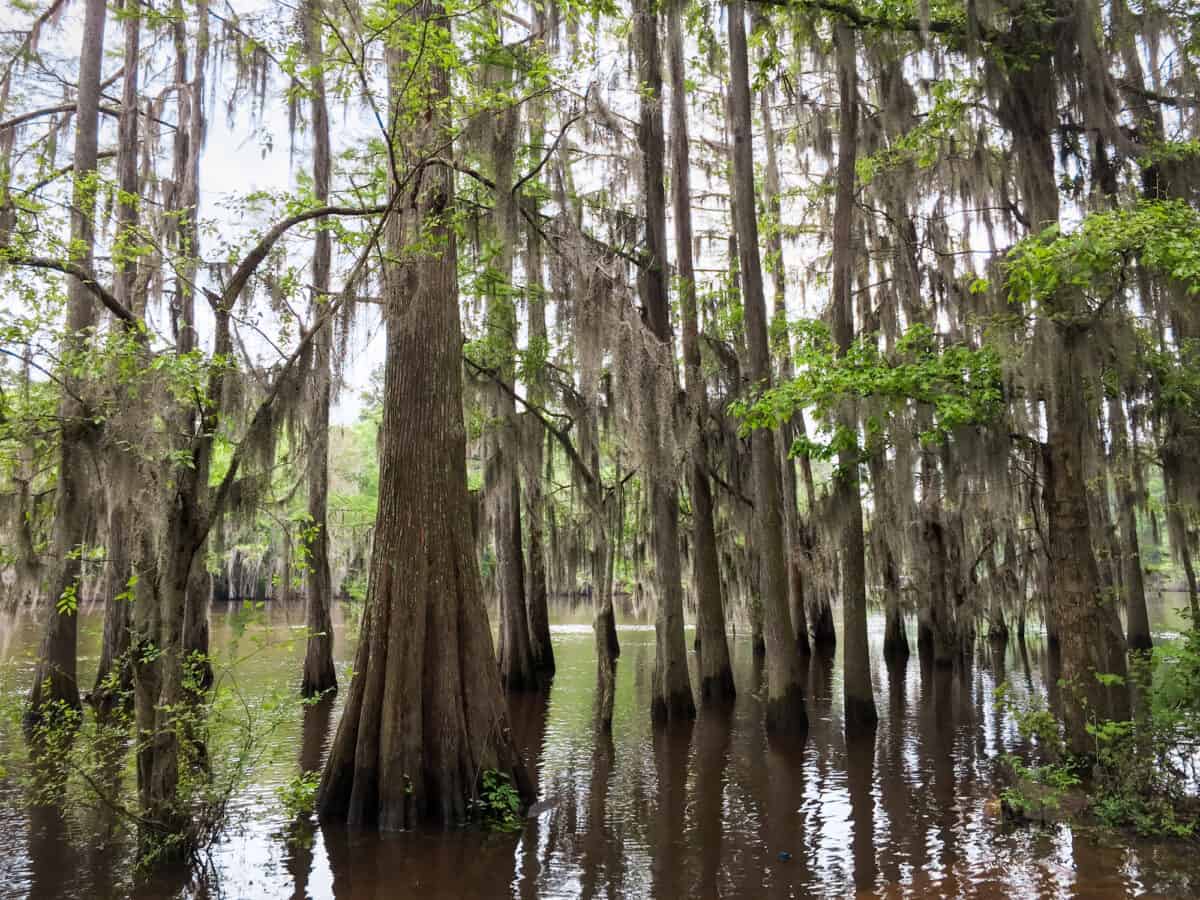Caddo: Guardians of the Piney Woods
Caddo: Guardians of the Piney Woods

The Caddo people, known as the "Guardians of the Piney Woods," have a rich history deeply intertwined with the landscape of East Texas. Their story is one of resilience, adaptation, and a deep connection to the land that sustained them for centuries. From their flourishing pre-colonial societies to their struggle for survival in the face of European encroachment, the Caddo story is a testament to the enduring spirit of a people who refused to be forgotten.
A Legacy of Ancient Wisdom
Related Articles: Caddo: Guardians of the Piney Woods
- Discover the Enchanting World of Indian Reservations in New York
- Discover the Vastness of the Seneca Indian Reservation: Uncovering Size and Significance
- Unveiling the Hidden Gems: Discover the Native American Heritage of Michigan
- Oklahoma: Where Tribes Thrive, History Lives, And Maps Tell A Story
- Unveiling the Heritage of the Kalamazoo Indian Tribe: A Journey of Discovery
The Caddo, who called themselves "Hasinai," meaning "people," were a powerful and complex civilization. Their territory spanned across the fertile lands of East Texas, Oklahoma, and Arkansas, encompassing the Red River Valley and the vast pine forests. They were known for their advanced agricultural practices, their sophisticated social structure, and their impressive architectural skills.
Their villages were carefully planned, with communal houses built from sturdy timber and thatched roofs. These structures, often referred to as "grass houses," served as the heart of Caddo social life, housing extended families and hosting ceremonies and gatherings.
The Caddo were skilled farmers, cultivating maize, beans, squash, and sunflowers. They also practiced hunting and fishing, relying on the bounty of the forests and rivers. Their understanding of the natural world was profound, and they developed intricate knowledge of plants and herbs for medicinal purposes.
A Society of Craftsmen and Artists
The Caddo were renowned for their craftsmanship and artistry. They were skilled potters, weaving intricate designs into their clay vessels. Their pottery, often adorned with geometric patterns and symbolic motifs, reflected their deep connection to the natural world.
They were also masterful weavers, creating beautiful textiles from cotton and native fibers. Their baskets, woven from reeds and grasses, were not just functional but also displayed intricate patterns and designs.
The Caddo excelled in the art of metalwork, crafting copper and shell beads, ornaments, and ceremonial objects. Their artisans used intricate techniques to create stunning pieces that showcased their artistic talent and cultural identity.
The Caddo’s Spiritual World

Religion played a central role in Caddo life. Their belief system was complex, encompassing a pantheon of deities, spirits, and ancestors. Their reverence for the natural world was evident in their rituals and ceremonies, which were often held in sacred groves or at special sites.
The Caddo believed that the spirits of their ancestors resided in the earth and played a vital role in the cycle of life. They honored these spirits through offerings, prayers, and dances, seeking their guidance and protection.
The Impact of European Colonization
The arrival of European colonists in the 17th century marked a turning point in Caddo history. The Europeans, seeking land and resources, disrupted the Caddo way of life and brought with them diseases that decimated their population.
The Caddo, forced to adapt to the changing landscape, found themselves caught between competing European powers. They formed alliances with some, but ultimately faced relentless pressure from colonists seeking to claim their land.

The Caddo’s Legacy Endures
Despite the challenges they faced, the Caddo people persevered. They fought to maintain their culture and traditions, and their story serves as a reminder of the resilience and adaptability of indigenous peoples.
Today, the Caddo descendants continue to honor their heritage and strive to preserve their culture. They have established museums, cultural centers, and educational programs to share their rich history with the world.
The Caddo legacy is one of strength, resilience, and a deep connection to the land. Their story is a testament to the power of cultural preservation and the enduring spirit of a people who refuse to be forgotten.
A Legacy of Resistance

The Caddo’s fight for survival wasn’t just about land; it was about protecting their way of life, their culture, and their identity. They resisted European encroachment through diplomacy, trade, and, when necessary, armed conflict.
The Caddo, known for their strategic prowess, formed alliances with other tribes, creating a formidable force against European expansion. They engaged in skirmishes and battles, defending their territory and their way of life.
The Caddo’s Journey to Resilience
The Caddo, forced to adapt to the changing world, found ways to survive. They embraced new technologies and skills, incorporating elements of European culture while holding onto their own traditions.
They learned to farm European crops, adopted new tools, and engaged in trade with the colonists. However, they never fully abandoned their own cultural practices, and their resilience in the face of adversity is a testament to their strength and adaptability.
A Legacy of Cultural Preservation
The Caddo’s journey through history is a reminder of the importance of cultural preservation. They fought to maintain their language, their traditions, and their identity in the face of assimilation and cultural erasure.
Today, the Caddo descendants continue to honor their heritage. They have revived their language, taught their traditional dances, and shared their stories with younger generations. Their dedication to cultural preservation ensures that the Caddo legacy will continue to thrive for generations to come.
The Caddo’s Enduring Spirit
The Caddo people, known as the "Guardians of the Piney Woods," have left an indelible mark on the landscape of East Texas. Their story is one of resilience, adaptation, and a deep connection to the land that sustained them for centuries.
Their legacy, etched in the pottery, the woven baskets, and the stories passed down through generations, continues to inspire and teach. The Caddo’s enduring spirit, their resilience in the face of adversity, and their unwavering commitment to their culture serve as a beacon of hope and a testament to the power of human spirit.
FAQ about Caddo Indians of East Texas
Q: Where did the Caddo people live?
A: The Caddo territory spanned across the fertile lands of East Texas, Oklahoma, and Arkansas, encompassing the Red River Valley and the vast pine forests.
Q: What were the Caddo known for?
A: They were known for their advanced agricultural practices, their sophisticated social structure, their impressive architectural skills, and their craftsmanship in pottery, weaving, and metalwork.
Q: What impact did European colonization have on the Caddo?
A: European colonists disrupted the Caddo way of life, bringing diseases that decimated their population and forcing them to adapt to the changing landscape.
Q: How did the Caddo resist European encroachment?
A: The Caddo resisted through diplomacy, trade, and, when necessary, armed conflict. They formed alliances with other tribes and engaged in skirmishes and battles to defend their territory.
Q: What is the Caddo legacy today?
A: The Caddo descendants continue to honor their heritage, preserving their culture through museums, cultural centers, and educational programs. They strive to maintain their language, traditions, and identity.
Q: How can I learn more about the Caddo people?
A: There are numerous resources available to learn more about the Caddo, including museums, historical societies, and online resources. You can also visit Caddo cultural centers and attend events celebrating their heritage.

Closure
Thus, we hope this article has provided valuable insights into Caddo: Guardians of the Piney Woods. We thank you for taking the time to read this article. See you in our next article!